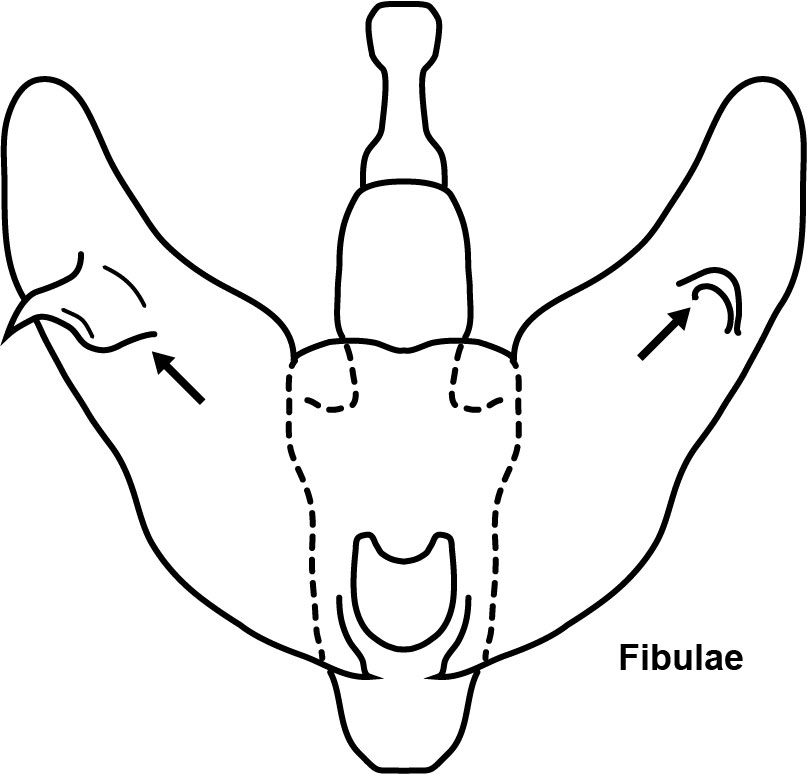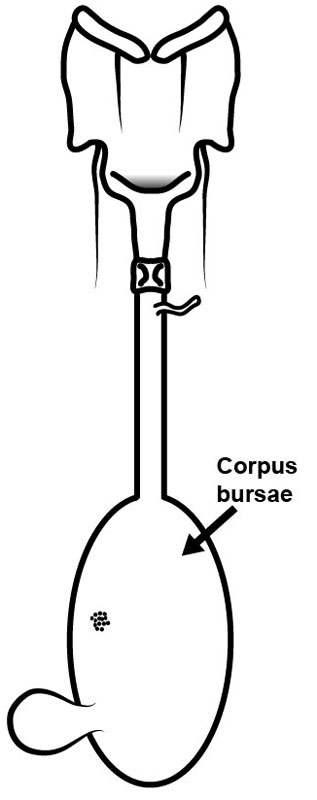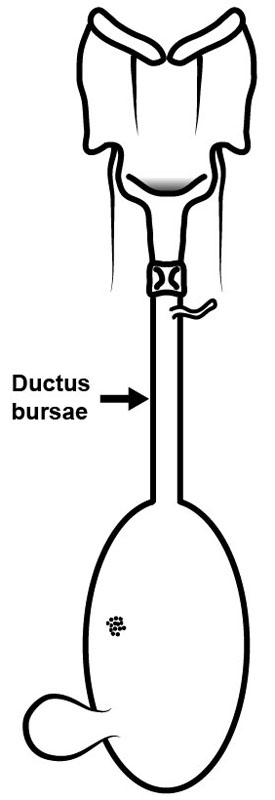Lineodes
Name
Lineodes Guenée, 1854
Type species: Lineodes hieroglyphalis Guenée, 1854
Synonyms:
- Scoptonoma Zeller, 1873
- Ciraphorus Dyar, 1910
Overview
Lineodes includes 35 species distributed in the New World and Hawaii. Six occur in America north of Mexico. The species are gracile with long legs and narrow wings, and they are often mistaken for plume moths (Pterophoridae). The male genitalia likewise have long, slender valvae, usually with a longitudinal fibulaFibula:
Any projection on the face of the valva (not including the saccular process, if any).
 . Female genitalia are much less distinctive among species, consisting of a globular corpus bursaeCorpus bursae:
. Female genitalia are much less distinctive among species, consisting of a globular corpus bursaeCorpus bursae:
The enlarged, bulbous anterior end of the female genitalia.
 without a signumSignum:
without a signumSignum:
Any sclerite, sclerotized area, or discrete granular area on the wall of the corpus bursae (pl. signa).
 and a usually moderately long ductus bursaeDuctus bursae:
and a usually moderately long ductus bursaeDuctus bursae:
The usually narrow duct between the ostium and antrum and the corpus bursae.
 without sclerites of the ostium or antrumAntrum:
without sclerites of the ostium or antrumAntrum:
Posterior section of the ductus bursae, posterior of the colliculum.
 . The North American species are easy to distinguish by wing pattern alone.
. The North American species are easy to distinguish by wing pattern alone.
The larvae of a few species are occasional pests. Lineodes integra is a widely distributed pest of eggplant in North America.
The genus has not been revised, and genitalia are illustrated for almost none. Most of the species were described in the 19th and early 20th Centuries. The only two keys that include large numbers of species (Dyar 1913Dyar 1913:
Dyar HG. 1913. The separation of some species of Lineodes (Lepidoptera, Pyralidae). Insecutor Inscitiae Menstruus 1: 94-96., Hampson 1913Hampson 1913:
Hampson GF. 1913. XXXVIII.mdash; Descriptions of new species of Pyralidae of the subfamily Pyraustinae. Annals and Magazine of Natural History 12: 299-319.) were published, remarkably, within days of each other.
Amsel (1956) proposed the tribe Lineodini for Lineodes and Atomopteryx (as Stenoptycha) based on the aberrant habitus, male genitalia and wing nervature.
References
Amsel 1956Amsel 1956:
Amsel HG. 1956 (1954). Microlepidoptera Venezolana I. Boletin de Entomologia Venezolana, Maracay 10 (1-2): 1-336.
Amsel 1957Amsel 1957:
Amsel HG. 1957 (1954). Microlepidoptera Venezolana II. Boletin de Entomologia Venezolana, Maracay 10 (3-4): Berichtigung, pl. 1-110
Dyar 1913Dyar 1913:
Dyar HG. 1913. The separation of some species of Lineodes (Lepidoptera, Pyralidae). Insecutor Inscitiae Menstruus 1: 94-96.
Hampson 1913Hampson 1913:
Hampson GF. 1913. XXXVIII.mdash; Descriptions of new species of Pyralidae of the subfamily Pyraustinae. Annals and Magazine of Natural History 12: 299-319.

